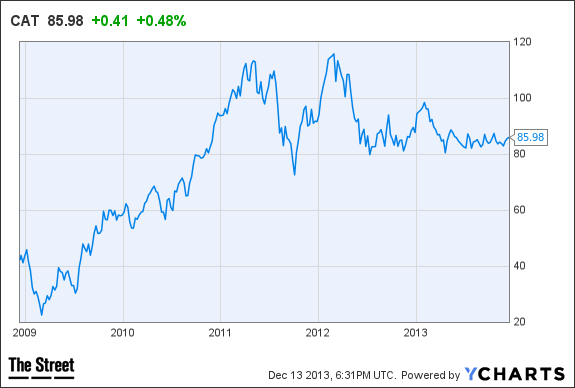(A version of this article appeared in TheStreet.com)
 Years ago I treated a teenager in the emergency room after an assault, re-implanting a tooth that had been knocked out during an assault.
Years ago I treated a teenager in the emergency room after an assault, re-implanting a tooth that had been knocked out during an assault.
His mother was so appreciative that before they left she had taken the time amd effort to sell me an annuity. Young and gullible and with discretionary cash, I signed on thinking “what a great idea.” I canceled that annuity within the three day window once I learned what an annuity actually was and soon after made my first stock investment.
When my son did an internship at a leading insurance company I refused to give him the names of any of my professional contacts, once he started telling me how great annuities would be for them. That valuable information on my enemies, however, were readily turned over I didn’t even give him my contact information.
To this day, I really dislike the idea of annuities, except if they’re unintentional and of my own making. I
‘m reasonably certain that no one on Caterpillar’s (CAT) Board of Directors thinks of it as a company in the business of providing annuities, but I do. I’m certain that their heavy equipment is excellent, but their artificial financial engineering products are even better.
My memory may be failing, but I can’t think of a company in the past year that has been disparaged more than has Caterpillar. It’s CEO, Douglas Oberhelm, has been generally pilloried and is frequently suggested as a leading candidate for “Worst CEO of 2013,” as Herb Greenberg collects nominations for that annual honor.
At this year’s Delivering Alpha Conference, famed short seller Jim Chanos presented a compelling argument for the reasons that Caterpillar was his choice as “short of the year.” While being in the running for worst CEO of the year is humbling enough, having your company in the crosshairs of someone willing to put their substantial assets to work in support of the thesis should be cause for further introspection. While perhaps true, it’s not entirely clear that Caterpillar has been engaged in any activities that are designed to help propel its shares higher, other than overpaying for shares as part of its share repurchase program.
It’s certainly not easy keeping a low profile when you’re a member of the Dow Jones Industrial Index as it spent much of the year hitting new record highs and your share price languished in a trading range. However, perhaps “Type A” personalities require a stock that is firing on all cylinders, but I prefer one that has settled into mediocrity and knows how to tread in place. Welcome to Caterpillar.
 Let’s look at the simple 2013 YTD statistics. While the DJIA has advanced 20.2%, Caterpillar has fallen 4.0%, but only down 2.1% if you plow dividends back into the equation. Unfortunately for those 2013 Caterpillar statistics the company advanced a dividend payment from 2013 to 2012 in order to take advantage of a lower tax environment. (CAT data by YCharts)
Let’s look at the simple 2013 YTD statistics. While the DJIA has advanced 20.2%, Caterpillar has fallen 4.0%, but only down 2.1% if you plow dividends back into the equation. Unfortunately for those 2013 Caterpillar statistics the company advanced a dividend payment from 2013 to 2012 in order to take advantage of a lower tax environment. (CAT data by YCharts)
While no one really cares about the sum of the absolute value of share price moves Caterpillar would be worshipped if they did. I have to admit having spent some time at the altar of Caterpillar, especially for most of 2013 as it rarely ventured far from home.
While the lack of performance is shameful, perhaps the real shame comes from exercising a buy and hold approach with a stock that has been so well suited for a covered call strategy, as it has traded in a range and has been repeatedly cited and chided for doing so.
Whenever you hear a stock criticized for being unable to break out of its trading range it’s time to think of creating your own annuity, rather than looking for an alternative investment.
Here’s why.
That range has created the opportunity to create your own annuity by serially purchasing shares when within that range and selling near the money or in the money calls. After all, why use out of the money calls in an attempt to optimize share gain when the real gain is from premiums? Collecting premiums and collecting dividends with occasional, albeit small gains or losses on shares over and over again has been an annuity in disguise. The income not only flows on a regular basis, but its accumulation can be significant and even make a celebrated short seller salivate.
In an 18 month period I have owned shares on 15 different occasions, sometimes holding different priced lots concurrently. In that time the average purchase price per share was $84.74, as compared to today’s $86.05 close. Adding dividends the 18 month return would be 5.2% for the buy and hold investor as compared to 52.7% for the aggressive covered option investor. During that same period of time the Dow Jones climbed 22.3%
Ultimately, every single argument being made against Caterpillar may be warranted and Oberhelm may, in fact, be deserving of an unwanted appellation. However, Caterpillar’s pricing behavior provides a good argument for remaining agnostic regarding the issues that others find so compelling.
Who knows, maybe even annuities can someday get beyond their “Worst Investment of 2013” status.
